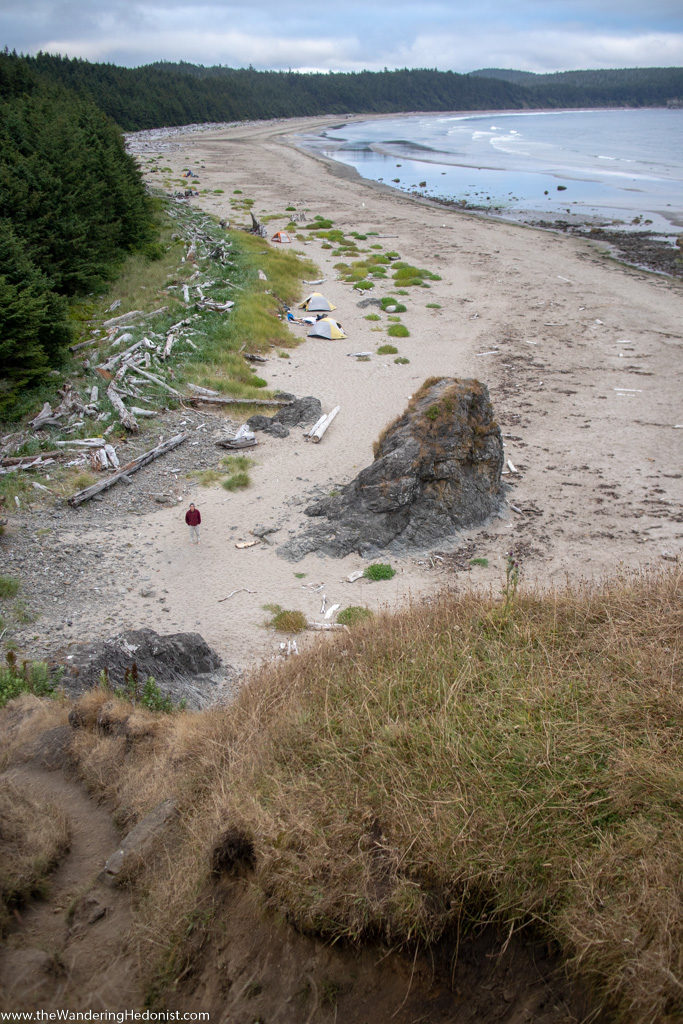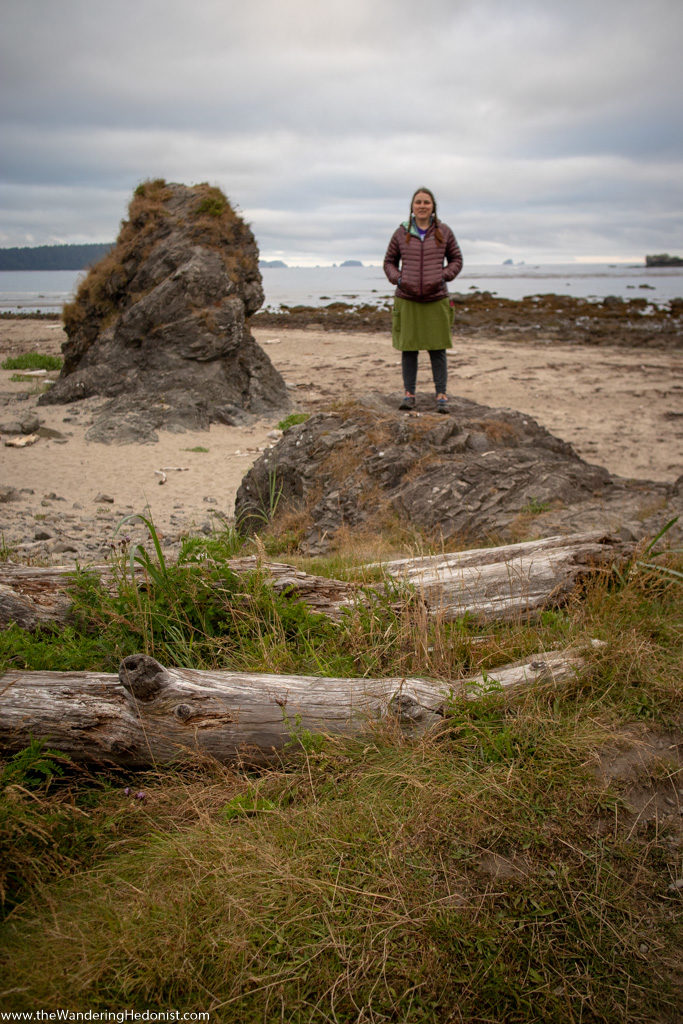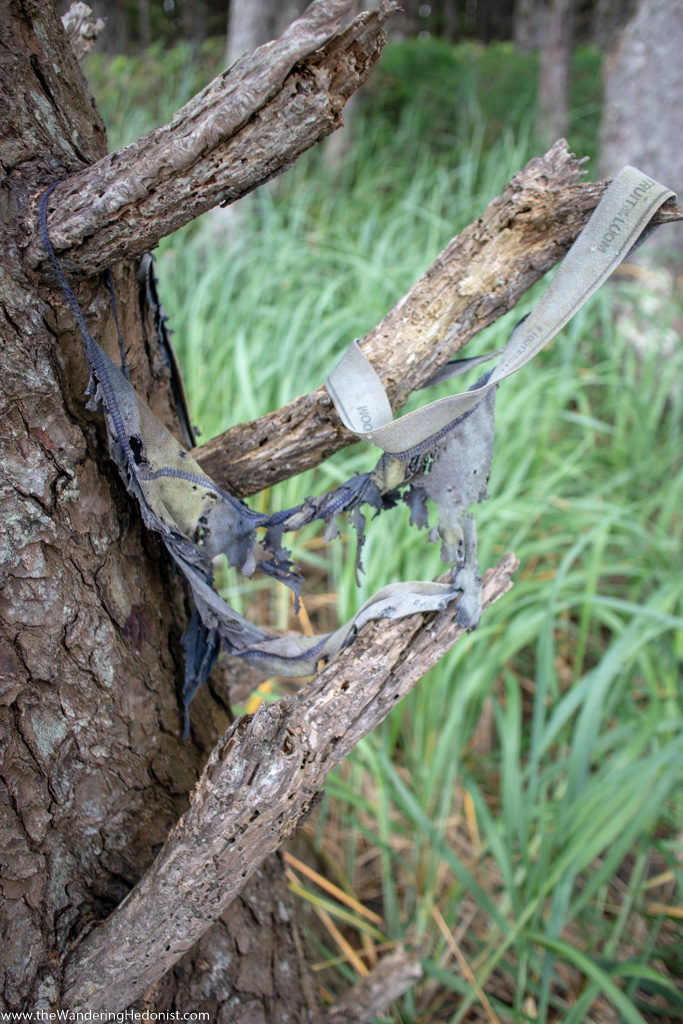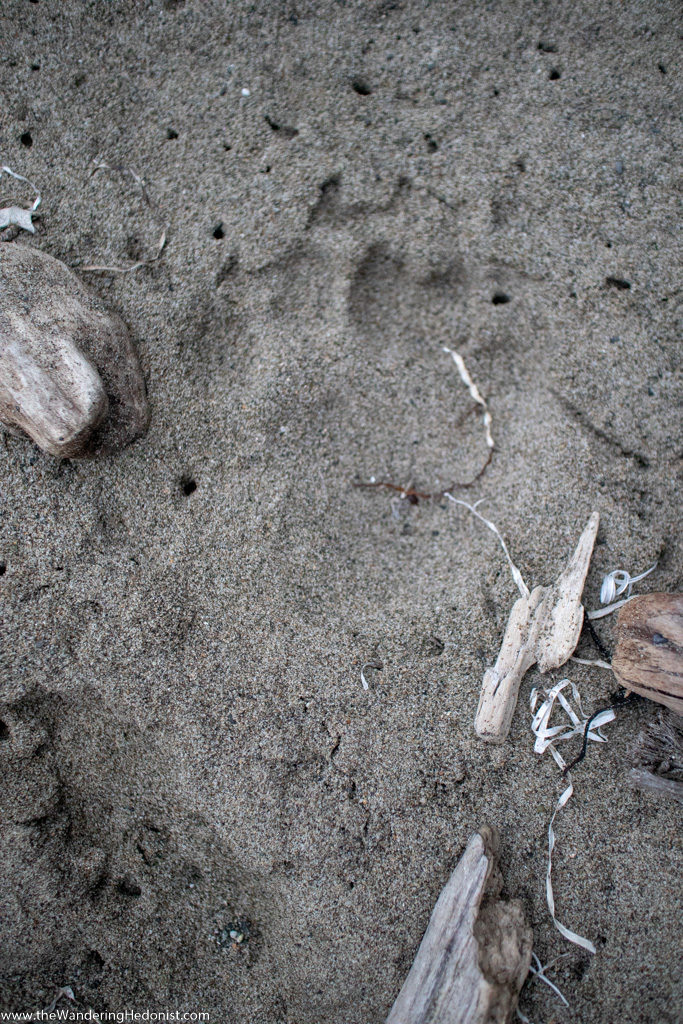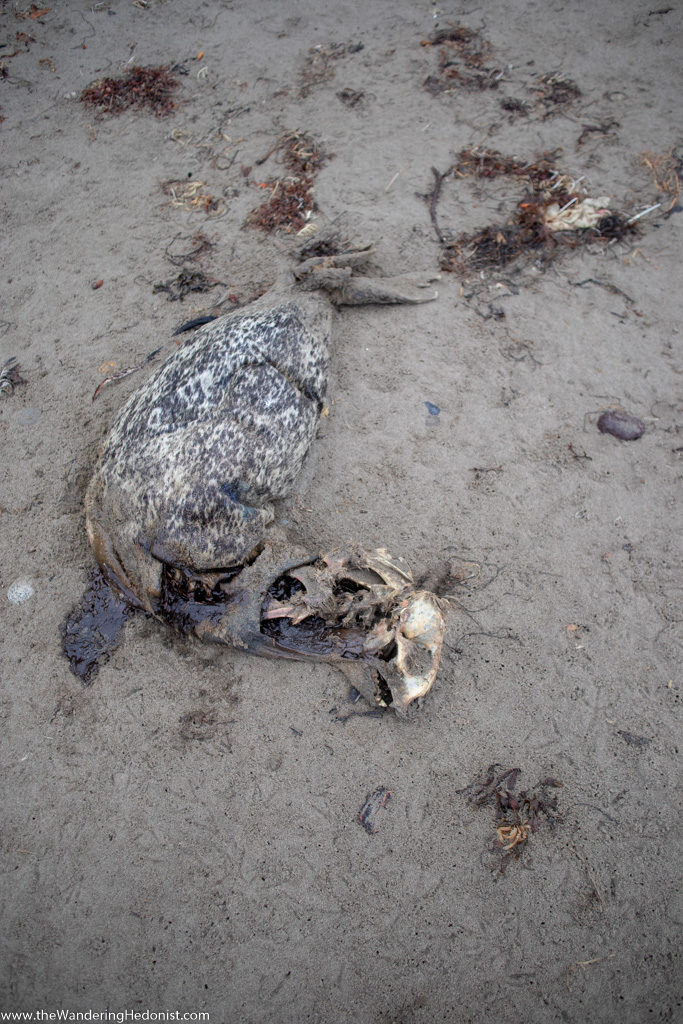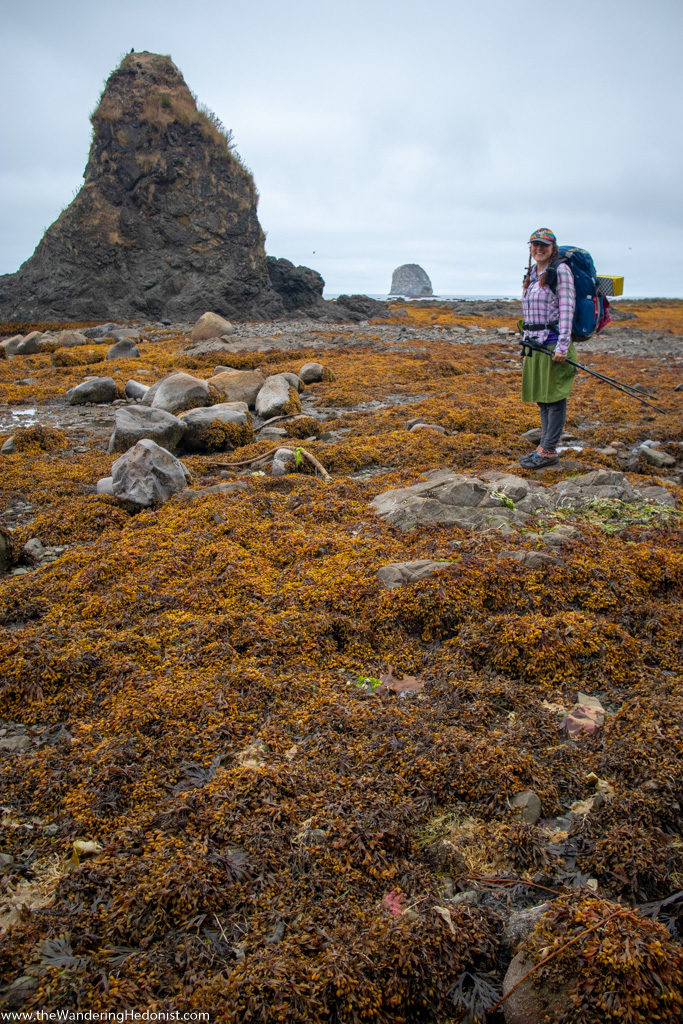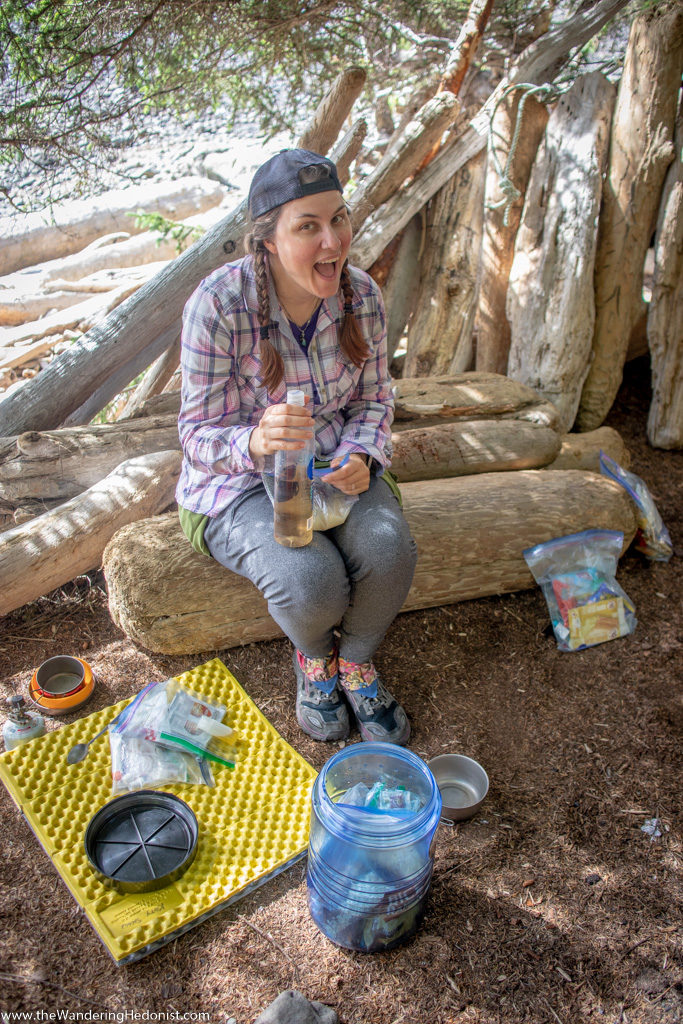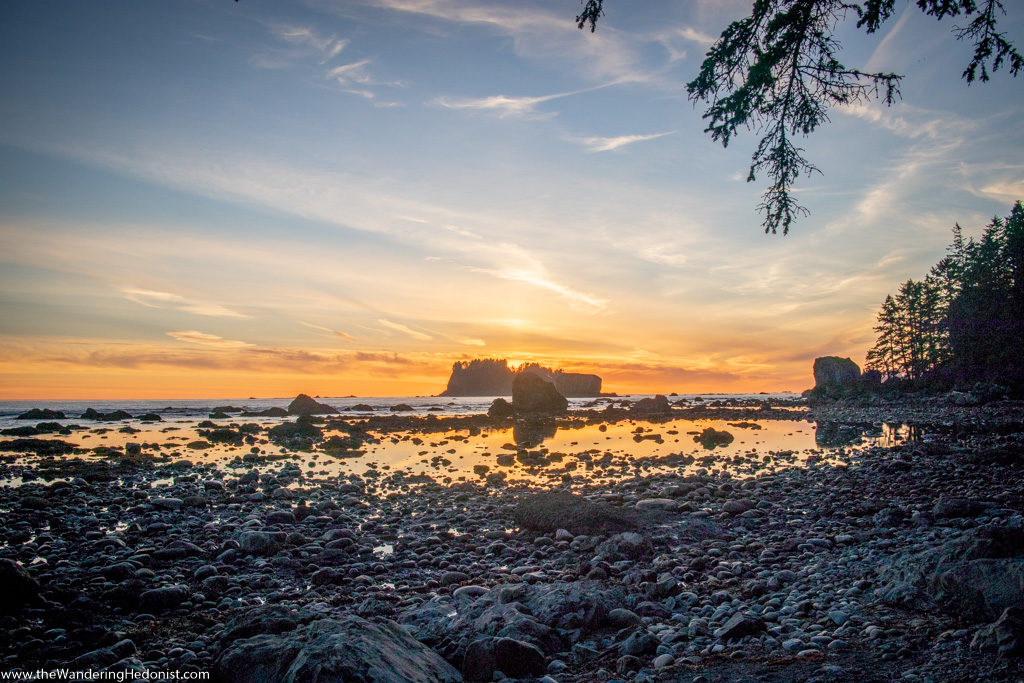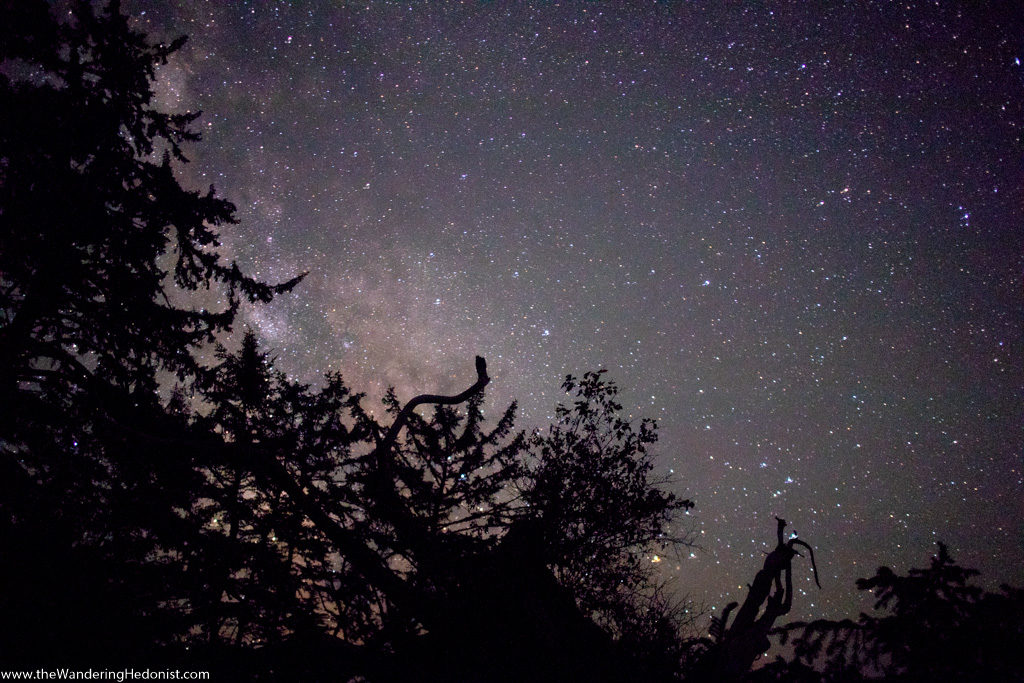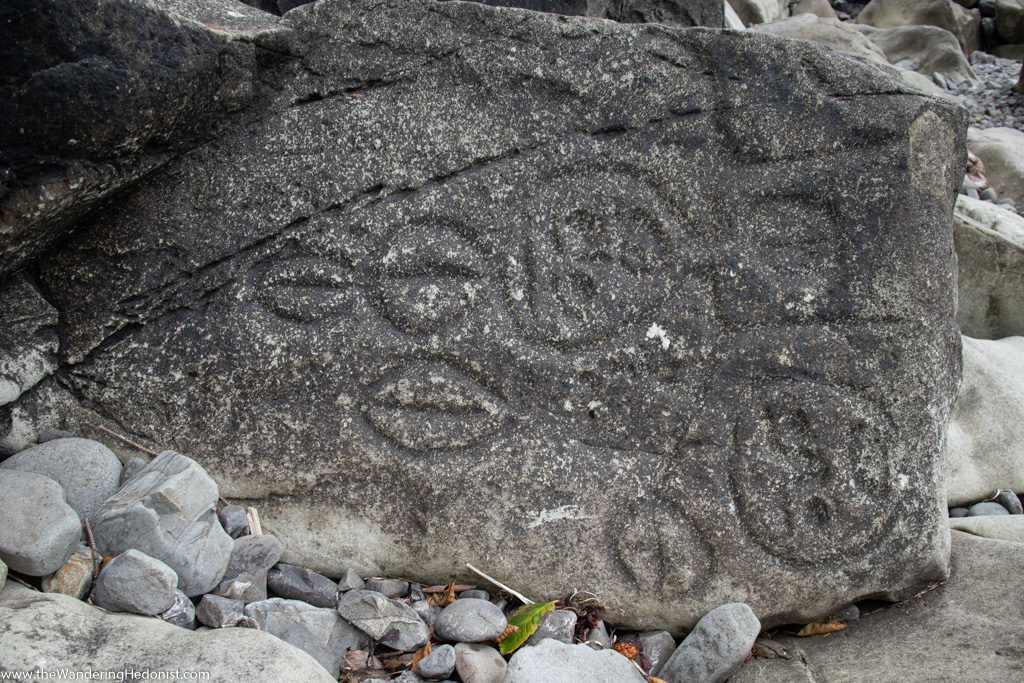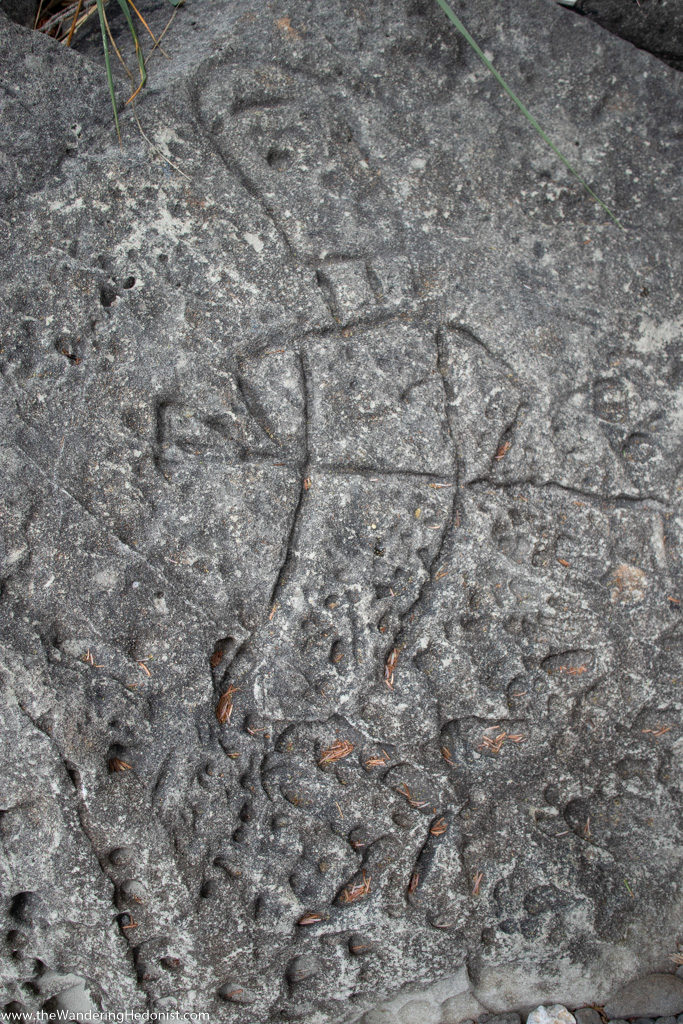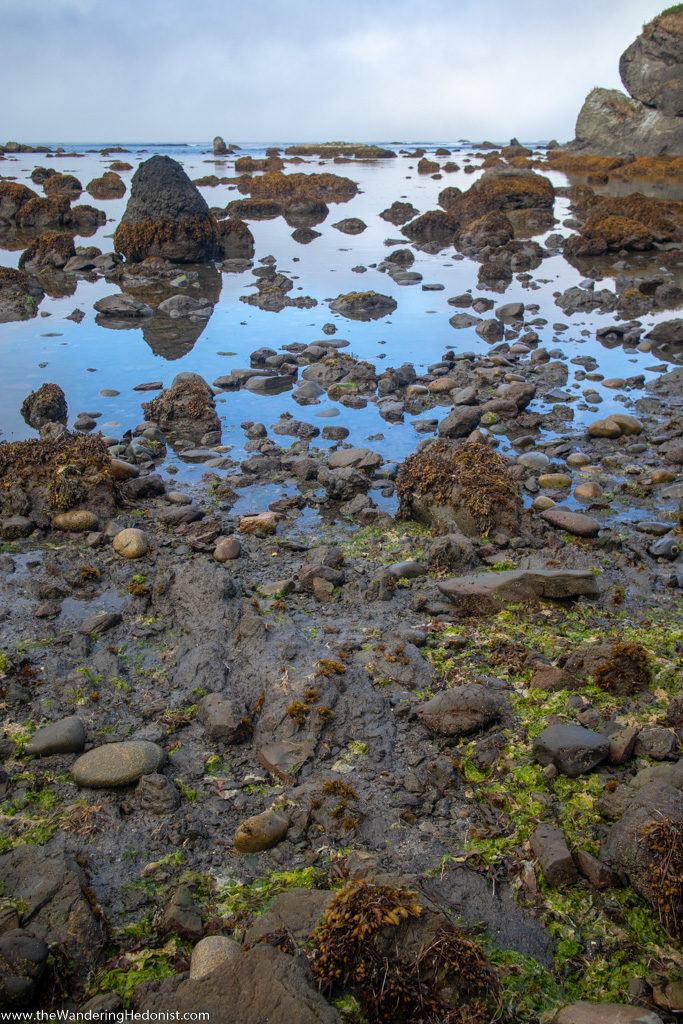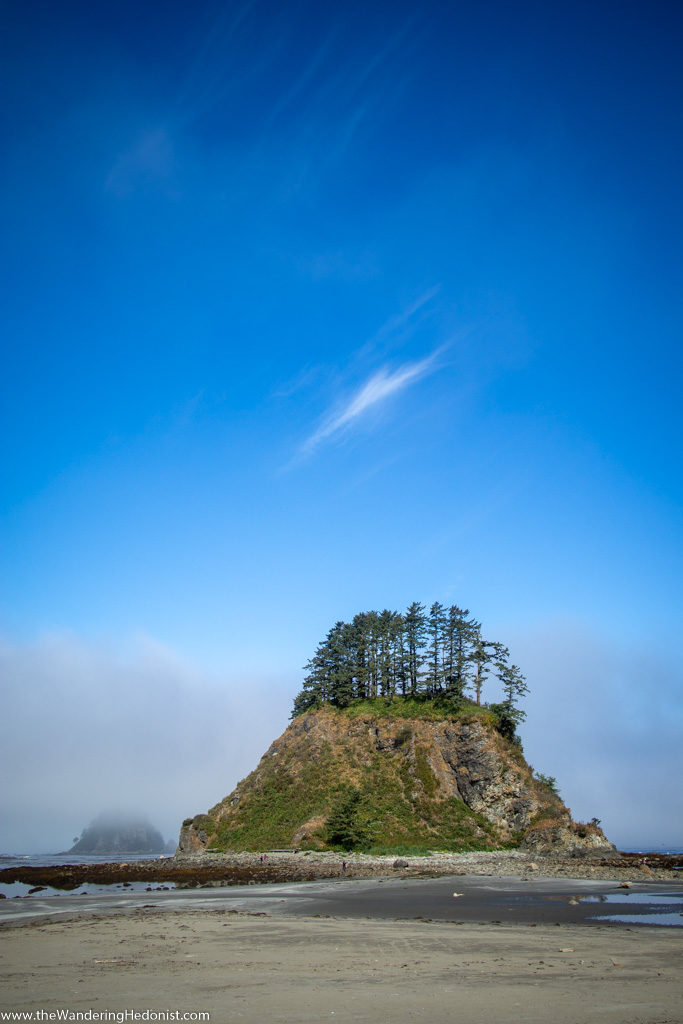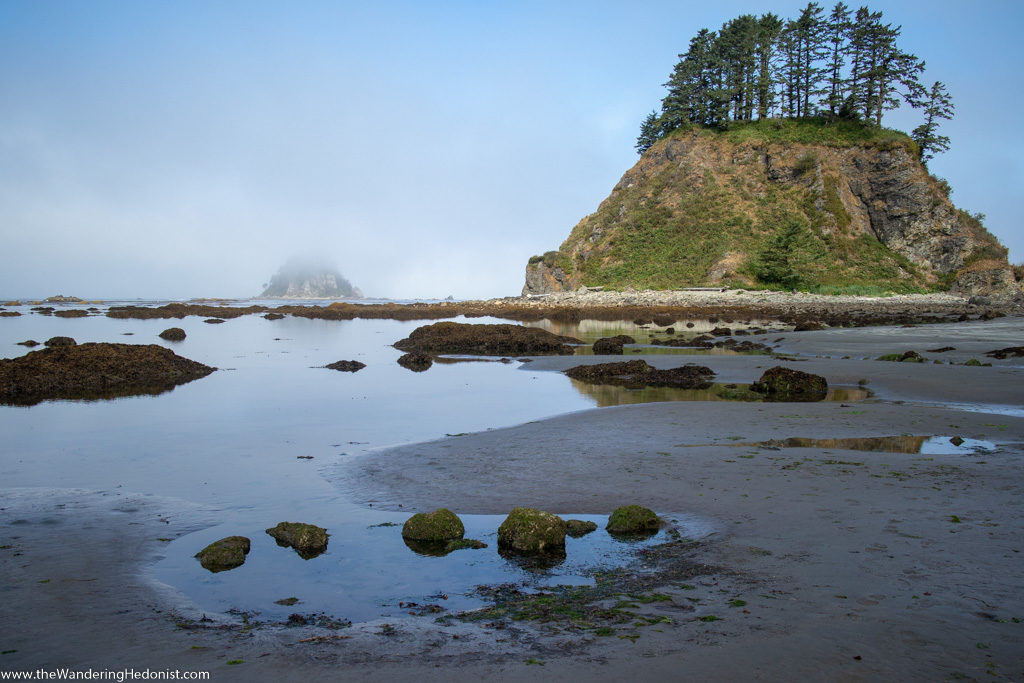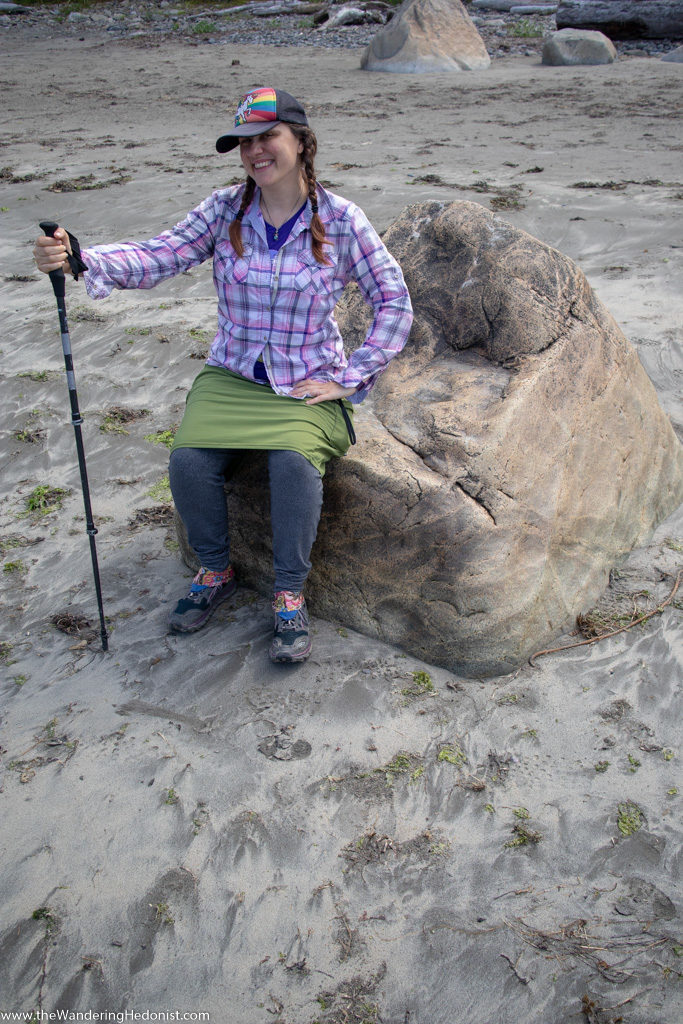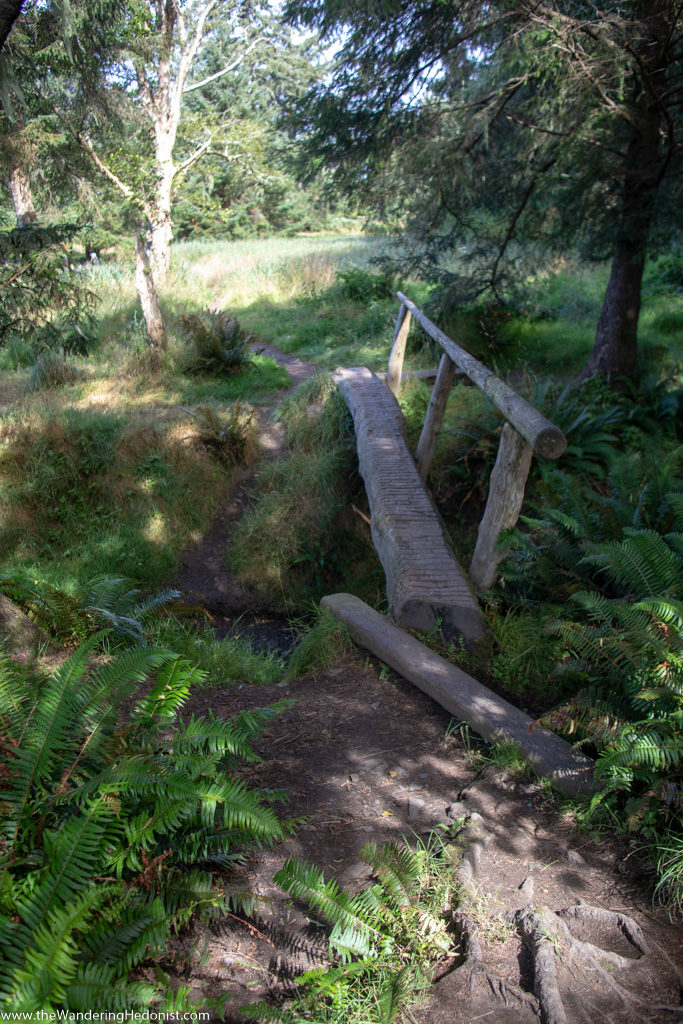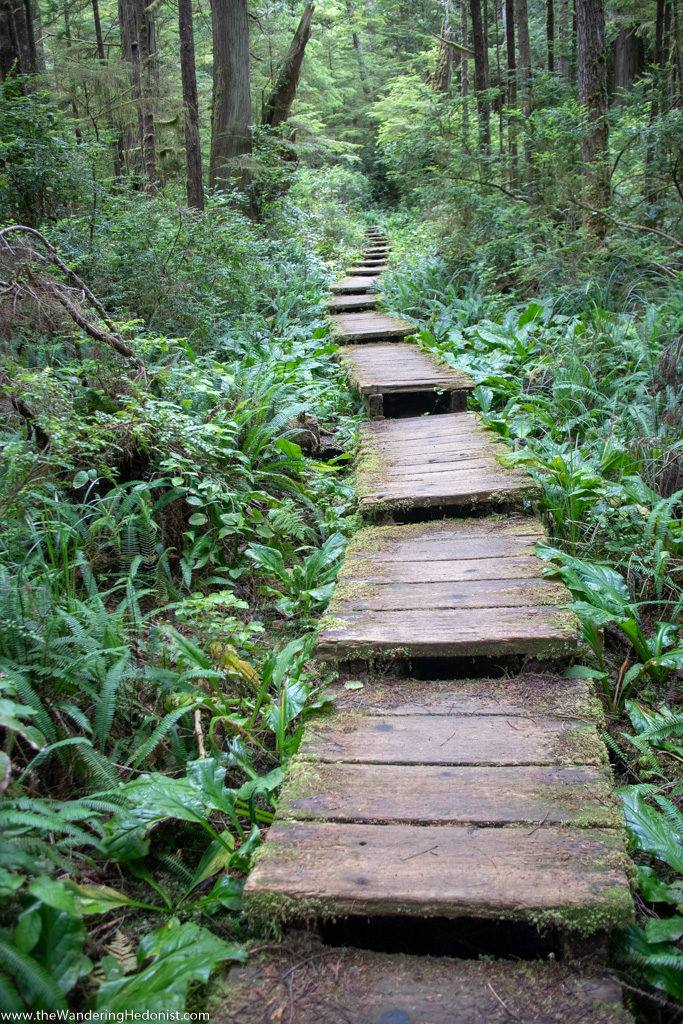Before I moved to Seattle, I would see pictures of pacific northwest beaches and swoon with how magical and amazing they looked. Rocky shores with tiny islands peppered out into the ocean rich with trees and dense moss. This spirit of life that could come alive and devour anything that stepped off the path.
And so I was very excited when Katy got us a back-country permit to backpack the remote shore of the upper peninsula for two nights (it’s a 5.5 hour drive from Seattle) within the Olympic Coast National Marine Sanctuary.
At the northern tip of the Olympic peninsula is Lake Ozette, and from there the Ozette Triangle Trail which goes from Lake Ozette to the beach, 3.1 miles up the beach along the Pacific Northwest Trail, then back again to the ranger station at the lake. The trails out to the beach are dense northwest rain forests and the beach trail is a vigorous walk on often soft sand or over rocky tide pools which takes quite a bit more energy than the woodland trails. You can hike the trail in either direction but our permit had us going clockwise staying at Sand Point first then Wedding Rocks for the second night.
As far as northwest trails go, this one is relaxed with little elevation gain, which is great for my knee. Overall I think we hiked about 12 miles over 3 days including a side trip to Cape Alava, the most western point in the contiguous US.
Lake Ozette to Sand Point
After the long drive to the ranger station in Port Angeles and then another 2.5 hours out to the coast, the both of us fighting a cold, we were pretty exhausted when we hit the trail. We had gotten our packs down to about 30lbs and were happy to discover the trail to the beach was relatively flat and used raised platforms over the often marshy forest floor. The three miles went fast.
It took a bit of searching to find a good campsite. The area around Sand Point was more populated than we were looking for and the campsites north of there were pretty hard to discover. But we did find an amazing secluded spot overlooking the beach, made camp, and had plenty of time to explore the beaches before sunset.
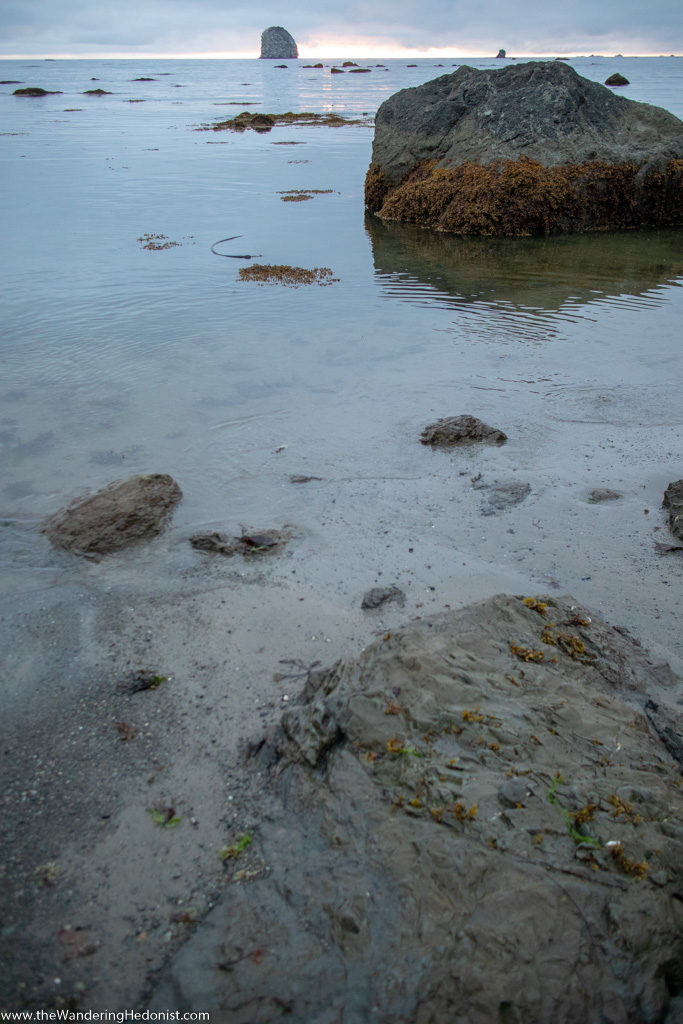
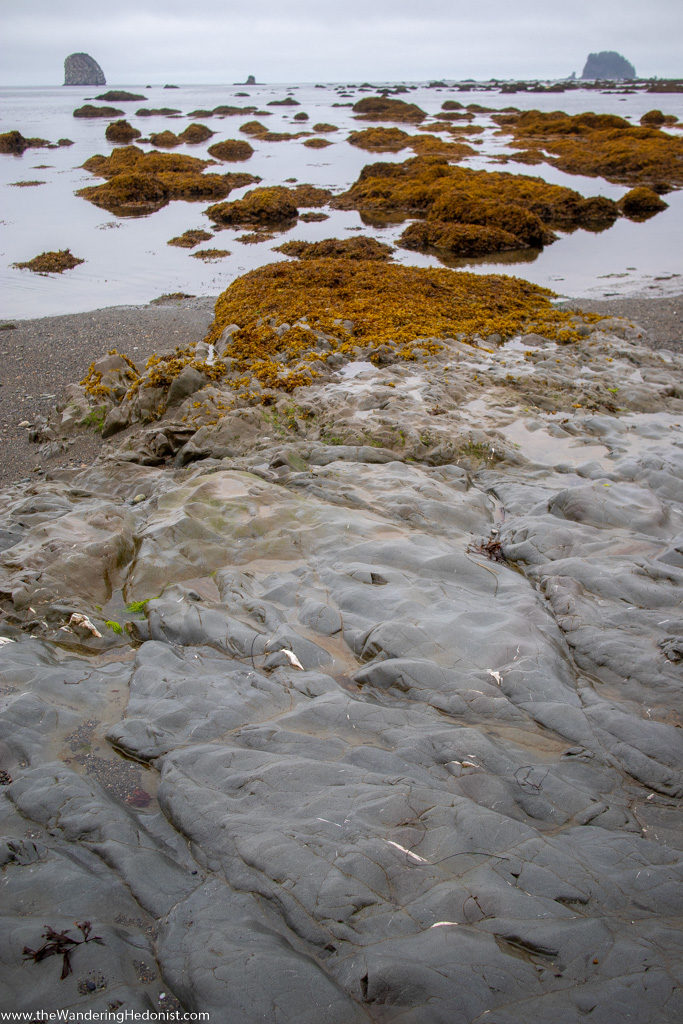
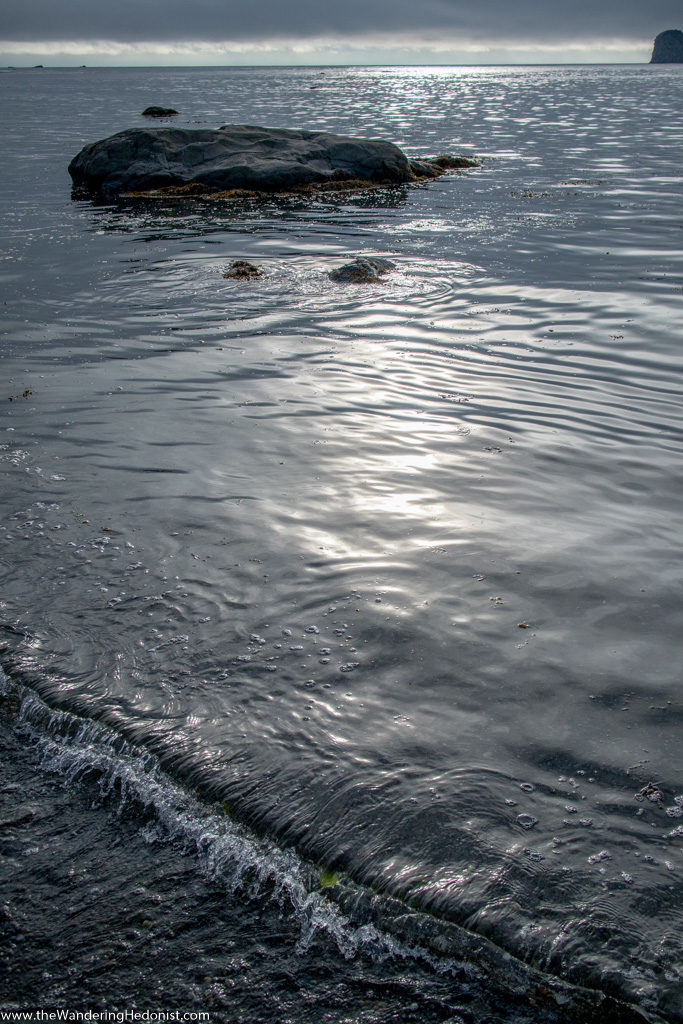
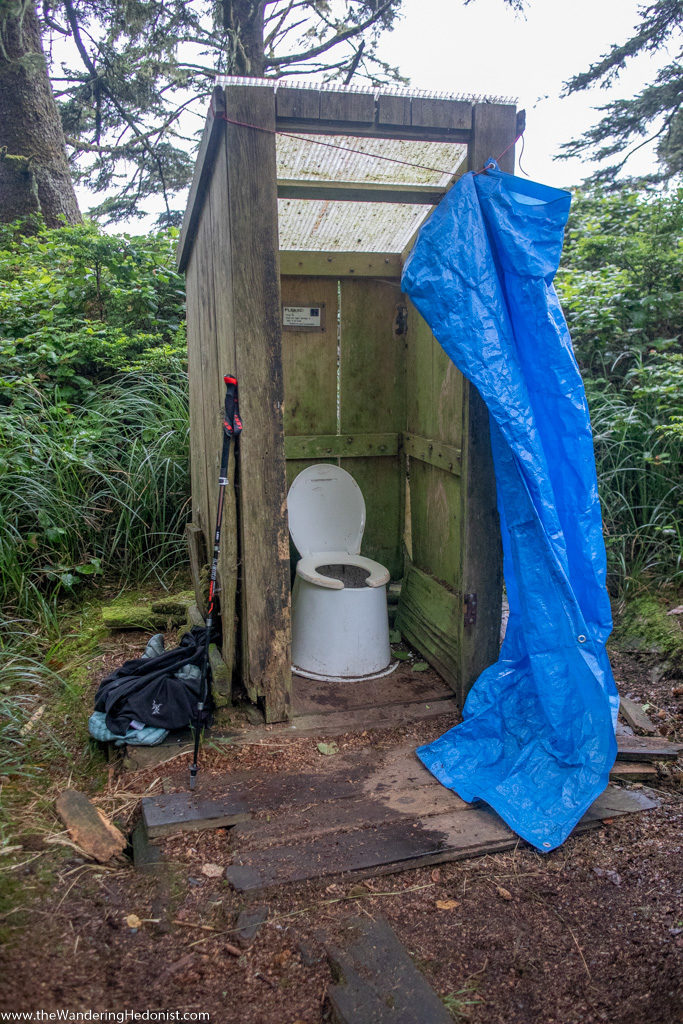
The outhouse at Sand Point. I was just happy it had walls. Actually I was just happy I didn’t have to squat over a self-dug hole.
Bears
So, you may be aware that I don’t really like the idea of running into a bear. I’ve had a few bad encounters with wild dogs growing up and the thought of being at the mercy of a half-ton mammal having a bad day doesn’t sound fun. And of course I have a few stories of friends encountering bears, all negative. All of the books said that there were no bears in the area but on the hike out we ran into three rangers who told us that a bear with her two cubs were in the area and were active between Sand Point and Wedding Rocks, which was near where we would be camping.
We chose a spot more north, it was deserted in that direction (in retrospect probably because of the bear sightings). We had walked the beach several times and everything seemed ok. But after a bit of a joint at sunset on the walk home we ran straight into the washed up corpse of a seal maybe 20 feet in front of our campsite. Pretty freaky. It looked exactly like a piece of driftwood so we hadn’t noticed. We were both thinking this is definitely something a bear would check out. And I started feeling a little paranoid. Sitting on driftwood directly in front of our campsite eating dinner, I spot clear footprints of a baby bar in the sand and bit further down, the heavier tracks of the mother. Great.
I wouldn’t’ say I was afraid, but I was definitely pre-occupied with the thought of a bear encounter. And I was thankful for my earplugs and rainfly to keep my imagination at bay.
Oddly the morning bear tracks didn’t seem that interested in the seal. We never ran into them on the hike. Only lots of bear signs. I am ok with this.
The hike up the beach
Beach hiking is strenuous. Soft ground requires more effort and your body moves in unusual ways, requiring strength in weird parts of your body. But the view is amazing and I really enjoyed it. We hiked north to Wedding Rocks where we had a permit to stay. This is where tribal hieroglyphs were found. The beach between is fairly straightforward with a short low tide walkaround at a rock break. The northern campspots were all taken (thank you Katy for the hard work in scouting those spots out) so we found a secluded campspot on the southern side. It required a tricky scramble up a mountain of driftwood but once up it seemed like we were camping in a driftwood fort with a wonderful view of the beach. The clouds opened up and we found ourselves with clear skies the rest of the trip.
Approaching Wedding Rocks, you’re forced out again into the rocky tide pools. This area is much harder to walk on, dodging pools and traversing slippery bowling ball size rocks. The beaches north continue to be rocky and a few tree falls require similar detours out into the tide pools. This was probably the slowest patch.
Once we made it to the trail marker back to the lake, we dropped our packs and hiked about a mile up to Cape Alava.
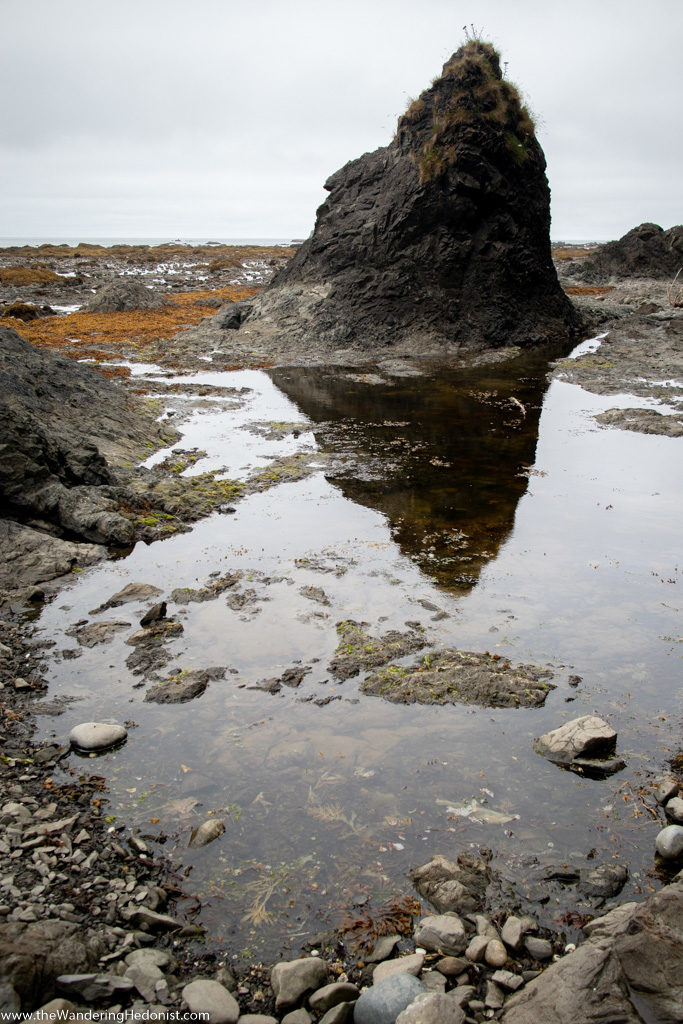
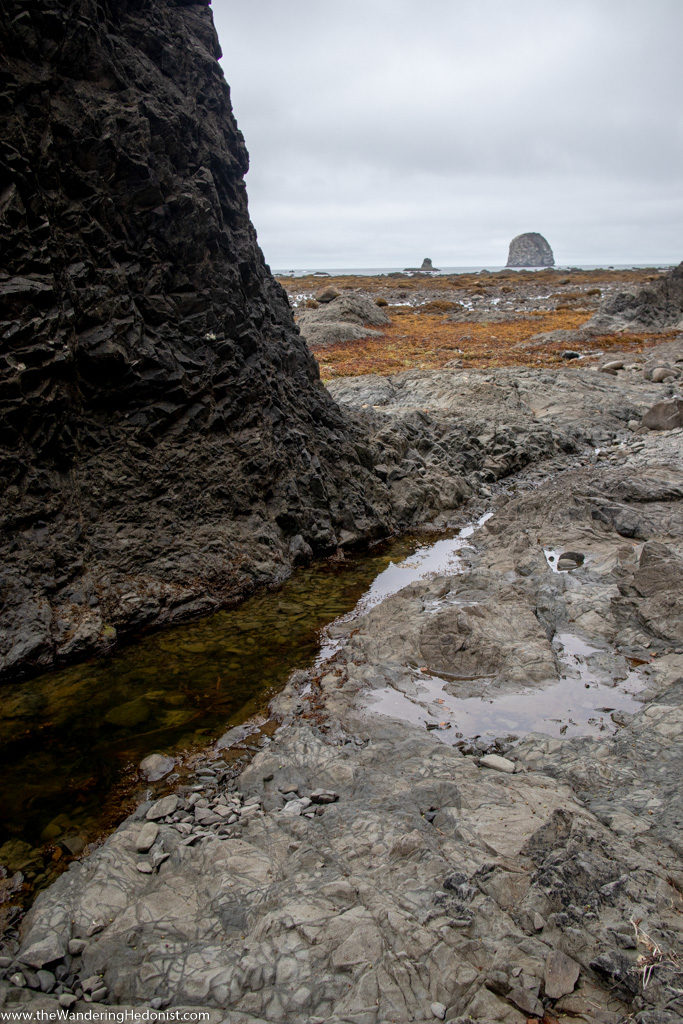
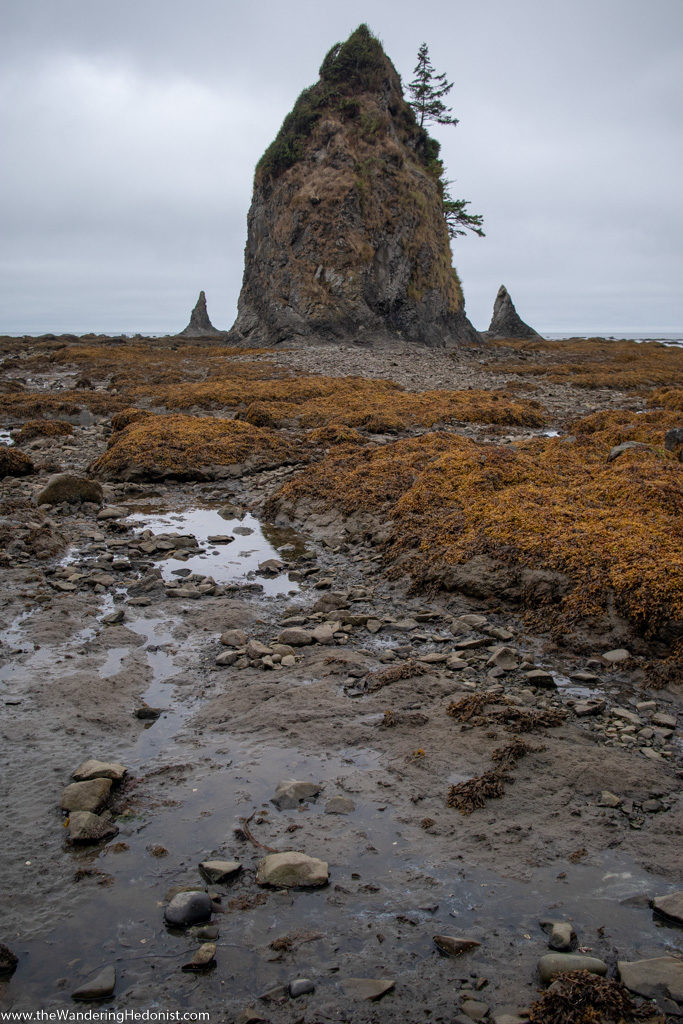
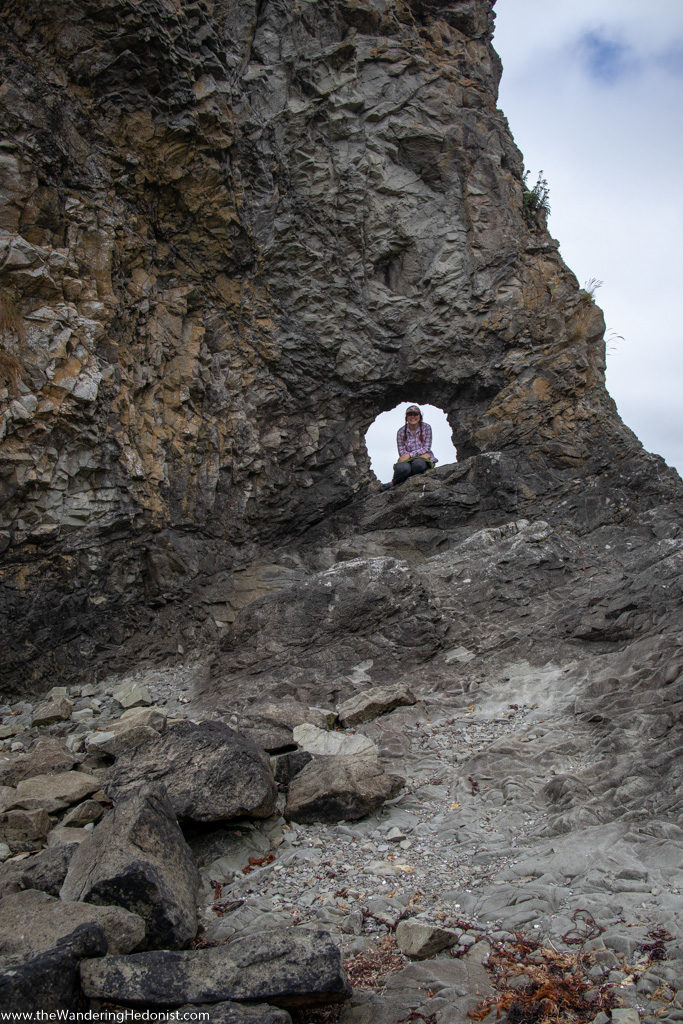
Wedding Rocks
Halfway between Sand Point and Cape Alava you pass an outcropping called Wedding Rocks which consists of a smattering of boulders large and small, some 30 feet high and some the size of a basketball. Hidden among the rocks are around 40 petroglyphs, most between 300-500 years old. Although some, such as the two masted sailing ship, are from around 1800. These were made by the Makah tribe of Ozette Village at Cape Alava, one mile north.
We spent a few hours here climbing all over the rocks looking for the petroglyphs which are surprisingly hard to find. I found about 5 sites but some of the most impressive glyphs I never found. It’s probably worthwhile to do a little research beforehand to know what you’re looking for.
Cape Alava
After breaking camp we hike north to Wedding Rocks and up the stretch of coast towards Cape Alava. The shore is much more rocky here and blowdowns force us out into the tidepools several times. It’s a slow deliberate scuttle across slippery rocks. After a mile or so we spot the trail marker back towards the lake and find the Cape Alava campgrounds.
The beaches here are sandy and much more broad. Lots of camping spots though a bit less secluded. Several tree covered islands stand off shore, for us shrouded in fog. We went all the way up to the cape tip and hiked out to Tskawahlah Island which was accessible at low tide. It’s a fortress of an island so we didn’t attempt the ascent but walked along the tide pools at the base. In the distance you could see the Bodelteh Islands which are the actual most western US land of the contiguous US.
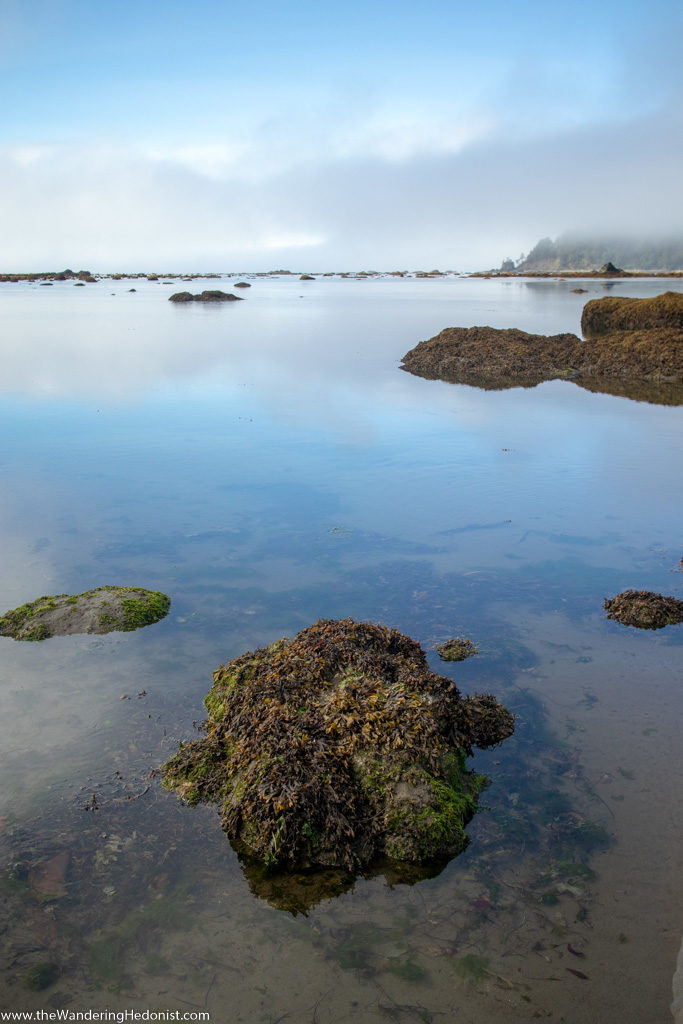
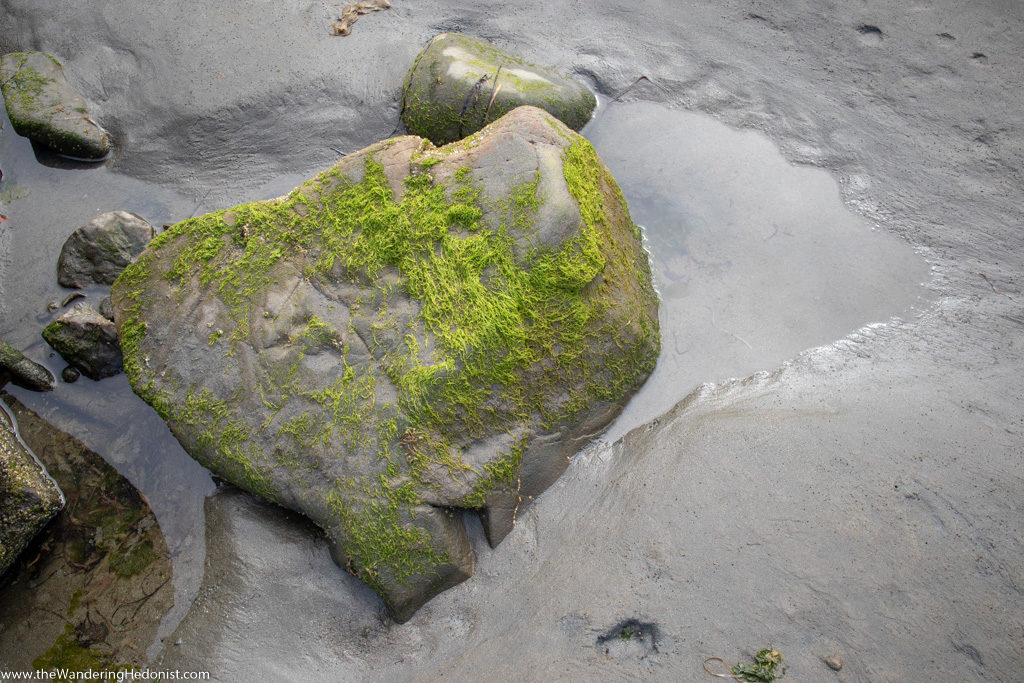
The hike back
The 3.4 mile hike back to Lake Ozette was a bit less flat than the hike in. The trail starts with a narrow stair climb followed by an ascending trail. This leads to a primarily constructed platform path that continuously ascends for most of the hike via small stair sets spread throughout. There’s a small descent to a bridge near the end of the trail and few open areas where prairies can be seen. The woods are beautiful here. Wet mosses and lush green canopies. We were tiring from the extra beach hiking exertion by the end and were happy to reach the ranger station to start our 5.5+ hour drive home.
The Ozette Triangle was a lovely backpacking trip that is well suited for a short beach excursion with kids, or a more strenuous day hike to do the whole loop at once. It’s only 9.4 miles if you stay to the trail but the beach portion will slow you down and you need to keep a tide chart to make sure you’re walking the beach at low tide. It’s possible to pass Wedding Rocks at high tide but the shore is often clogged with driftwood and trees and the walkaround just past Sand Point is quite difficult to pass at low tide and requires a steep climb not advised at night.
Starting at Cape Alava and hiking towards Sand Point is probably a better approach for a day hike as the first portion is mainly downhill and the last portion fairly flat. But for our three day trip I enjoyed the easy first day.





